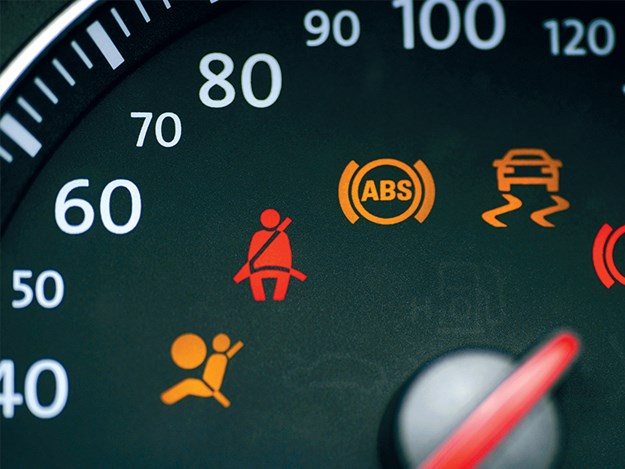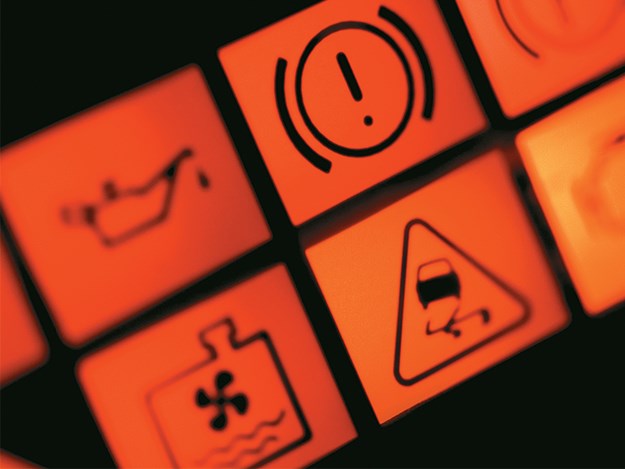Over the past few years, we’ve encountered countless acronym labels for new systems and devices incorporated into motor vehicles that are supposed to make them safer for us to travel in. They are designed to avoid accidents or reduce damage if the accident proves to be unavoidable.
Listed here are some of the acronyms with an explanation of their purpose.

ABS—Anti-lock Brake System. During sudden or heavy braking, this monitoring system provides optimum pressure to each wheel’s brakes to avoid having the wheel lock up (skid), allowing the driver to take evasive action without loss of control and improving the vehicle’s ability to stop quickly and safely.
Brake Assist. Studies by Toyota show that drivers don’t break quickly enough or hard enough to be effective in an emergency. Break assist is designed to recognise how hard and fast the driver has stepped onto the brake pedal. When it detects an attempted panic stop, it adds additional pressure to the braking effort to make the vehicle stop quicker.
TRC—Traction Control. This helps prevent wheels slipping when the vehicle is starting/accelerating on slippery roads. When wheel spin is detected, the system applies the brakes or slows the engine to regulate wheel spin and improve tyre contact with the road surface.
VSC—Vehicle Stability Control. This is designed to prevent the wheels from sliding sideways when cornering or taking evasive action. It helps stabilise a turning vehicle. When the vehicle senses a loss of traction or slips, braking is automatically applied individually to the appropriate wheel(s) and engine power is reduced to help secure the safety of the vehicle.
HAC—Hill-start Assist Control and DAC—Downhill Assist Control. Supports drivers ascending and descending steep slopes. HAC is designed to stop the vehicle from rolling backwards when moving off up an incline. When the driver’s foot moves off the brake pedal to the accelerator, the brakes remain on until the vehicle moves forward. On a VW Passat, it works well when towing a caravan.
DAC limits vehicle speed to around 5km/h when descending steep slopes or slippery surfaces to maintain vehicle stability and directional control. Front-wheel drive vehicles can ‘toboggan’ when the brakes are applied when travelling downhill on slippery (gravel) roads. DAC can help avoid this problem.
LDA—Lane Departure Alert. When the vehicle leaves its lane, the system warns the driver. A camera records the vehicle’s position relative to the white or yellow lane markings. When the vehicle leaves its lane without signalling, an audible/visual signal alerts the driver.
BSM—Blind Spot Monitor. Uses radar to detect vehicles travelling parallel close by but not visible in the door mirrors (the blind spot). A buzzer and a flashing indicator on the door mirror alert the driver.
NEW TECHNOLOGY TO ASSIST IN PARKING

IPA—Intelligent Parking Assist. This system helps the driver parallel park kerbside or parking in a garage. Once the driver selects the appropriate parking position on the monitor, the IPA assists the driver to turn the wheel correctly, making an average driver look like an expert.
RCTA—Rear Cross Traffic Alert. Typically, backing out of a parking lot can be hazardous. RCTA employs radar sensors to detect vehicles approaching from any direction and alerts the driver by a buzzer and a flashing indicator on the door mirror.
Additional safety systems in vehicles
Additional safety systems are heading our way to further assist drivers. Some of them are:
- VDIM—Vehicle Dynamics Integrated Management. Integrating the first seven systems in the list above into a single cohesive package.
- DRCC—Dynamic Radar Cruise Control. Uses radar to simplify highway driving by maintaining a steady distance between your vehicle and the vehicle ahead.
- MAM—Multi-Angle Monitor. Cameras mounted on the front, rear, and on the side mirrors capture images and process them to produce a single image on your monitor that appears to have been taken from directly above the vehicle. Very useful when negotiating in confined spaces.
- AFS—Intelligent Adaptive Front-lighting System. A system where the headlights move to follow the direction of movement of the steering wheel, lighting around the corner, improving cornering visibility.
It is worth noting that not all vehicle manufacturers use the same names and acronyms for near-identical systems. Usually, a quick read of the system description will tell if it is the same as the one listed above hiding under a different acronym.





